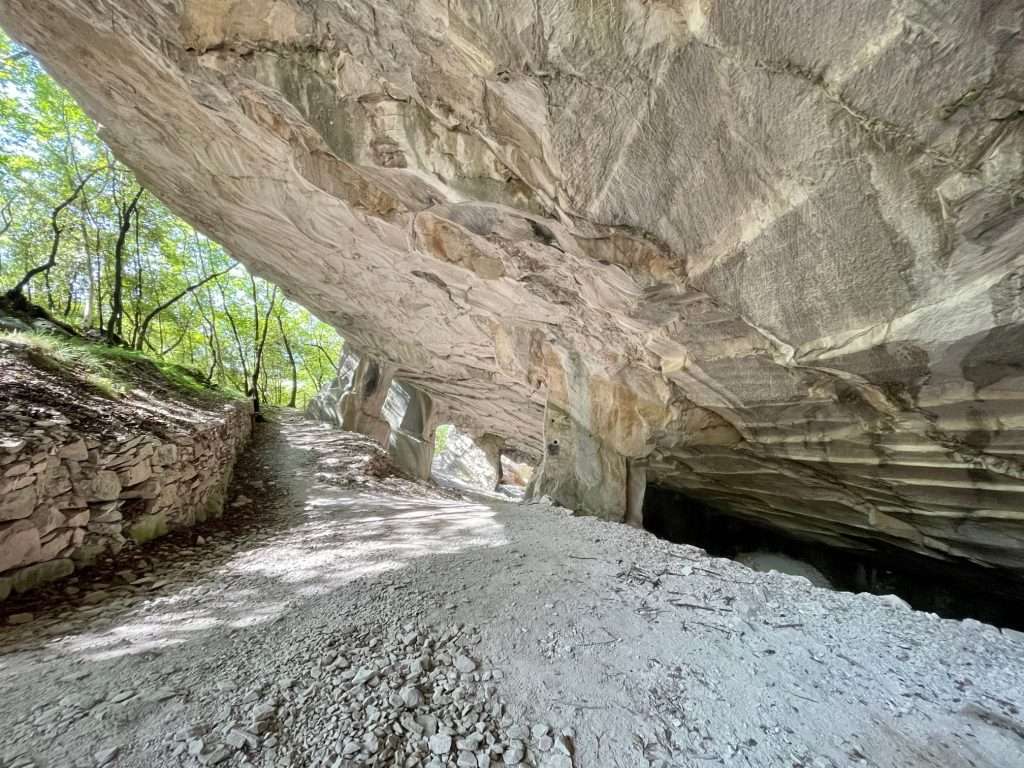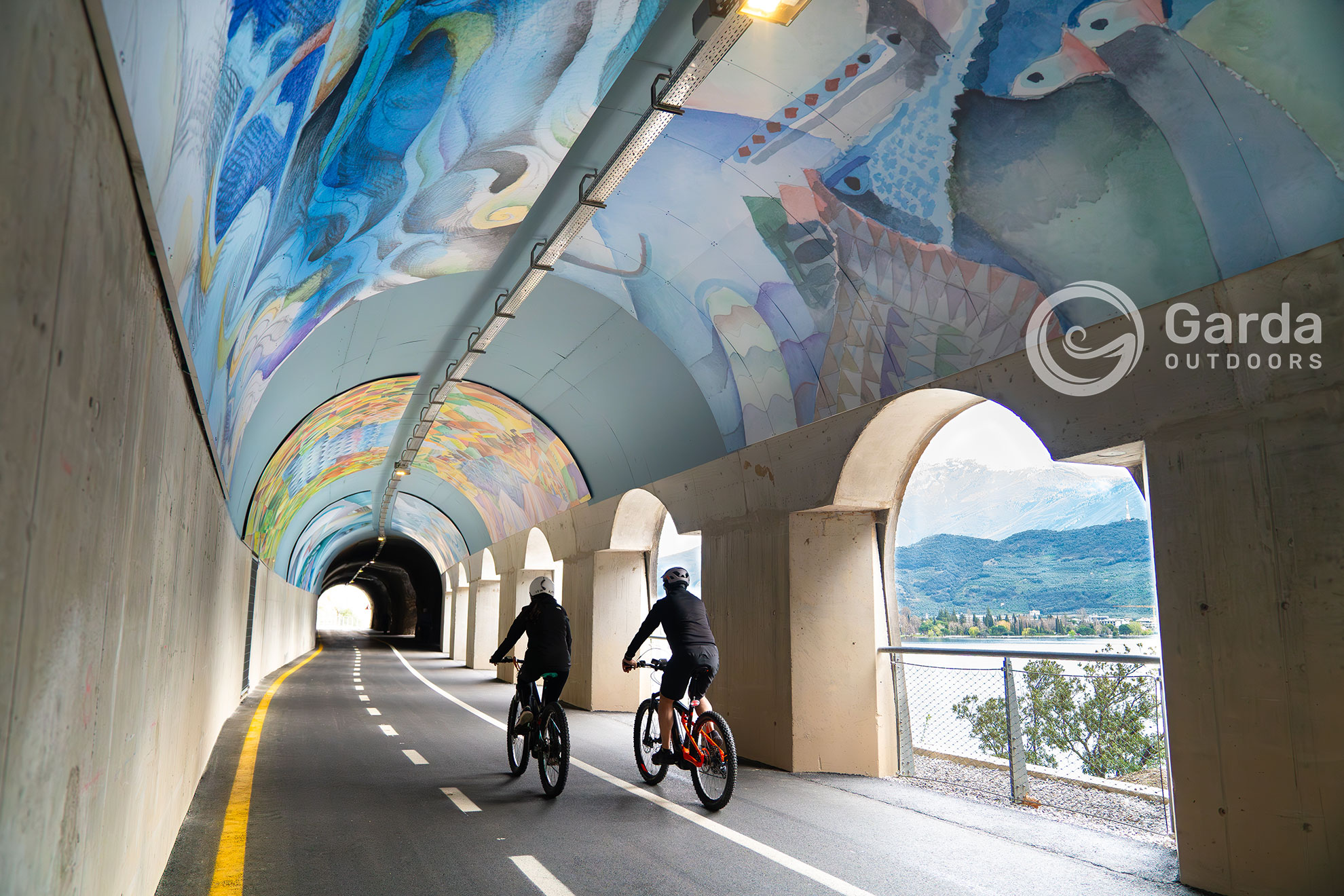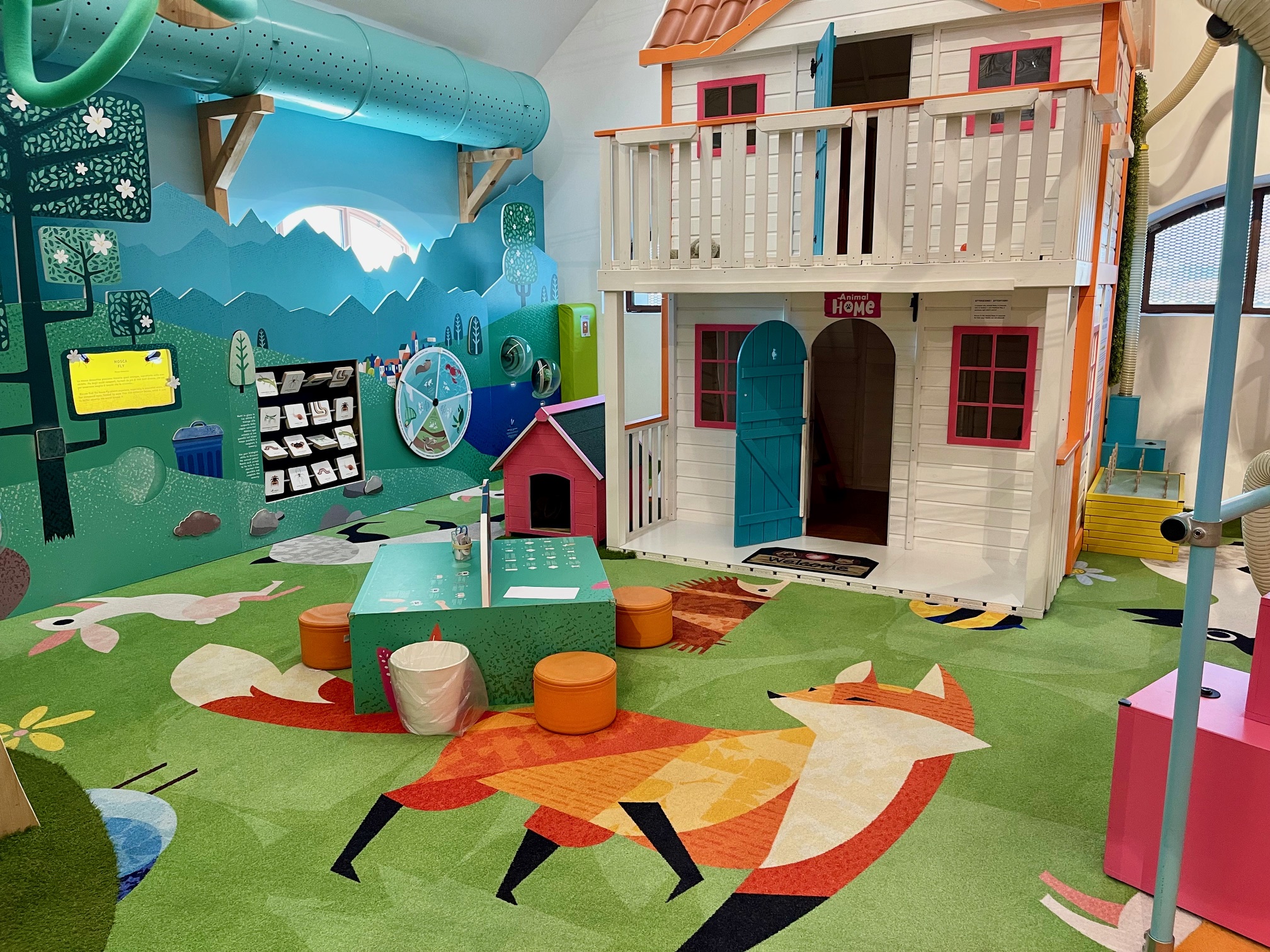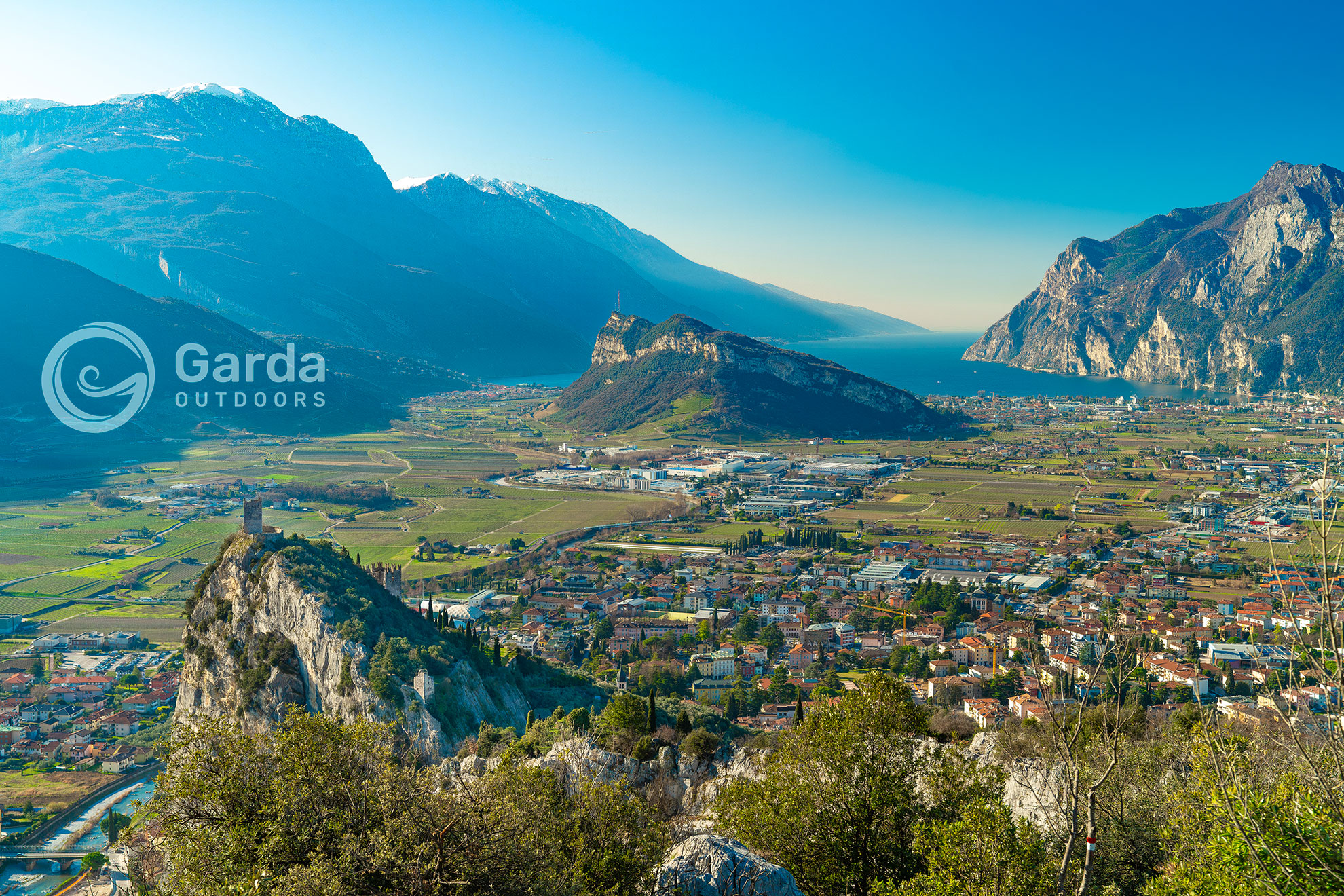Near Arco (TN), there is a treasure chest full of charm and biodiversity: the Bosco Caproni historical-naturalistic path.
It owes its name to having been owned by the pioneer of world aeronautics Gianni Caproni (1886-1957) who reclaimed this 44-hectare area, promoting its reforestation.
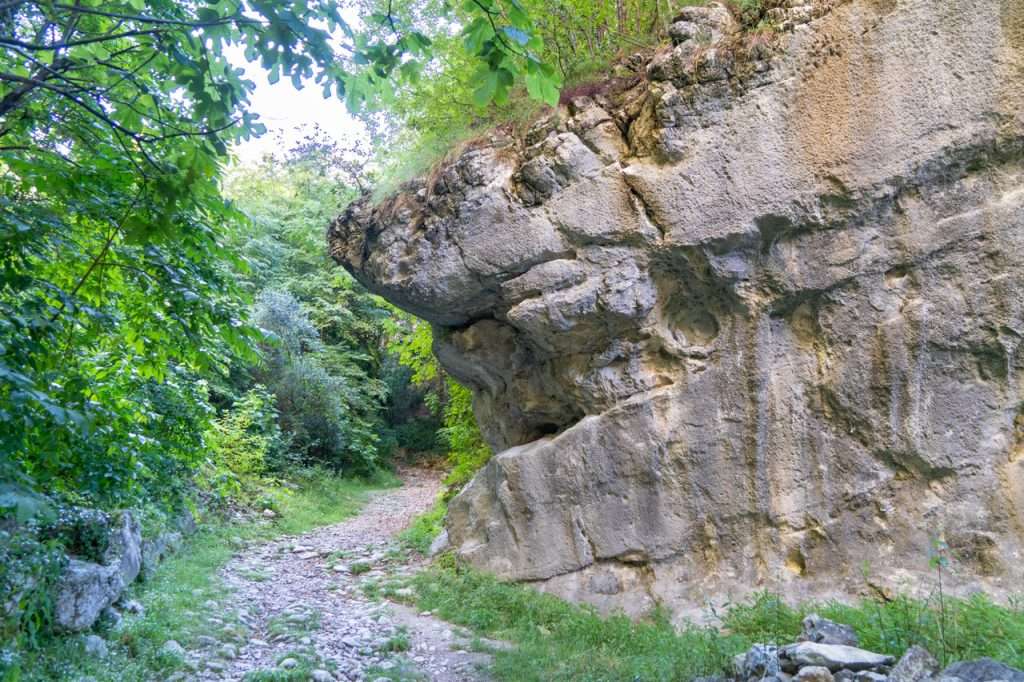
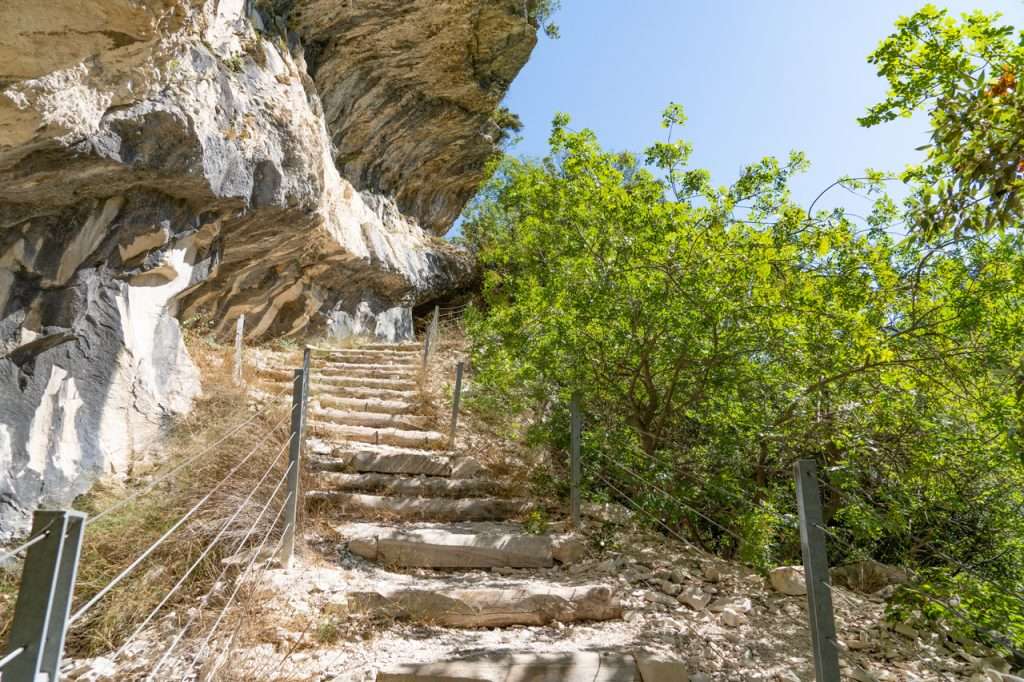
What to do and see along the Bosco Caproni route
A feature that makes this excursion even more beautiful is that it is an easy circular route, with a difference in altitude of about 150 m (going uphill and back downhill), lasting about 2 hours.
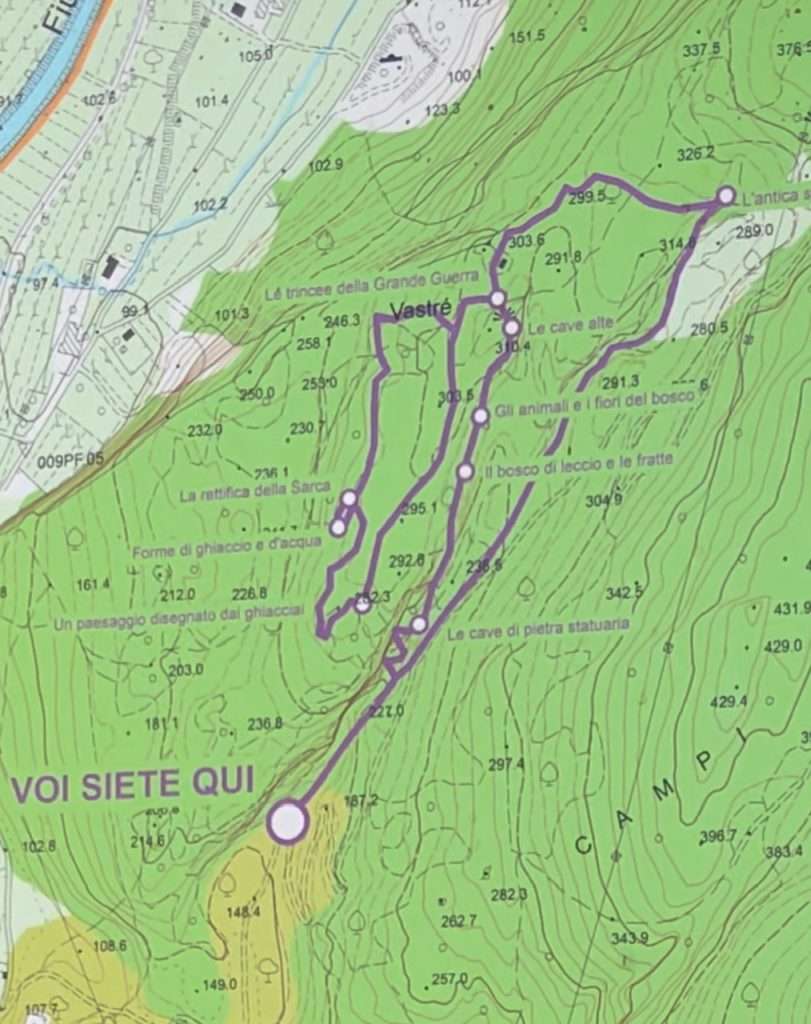
Once you have taken the Bosco Caproni forest road, you immediately come across the Abissi cliff and then you find the crossroads: we advise you to start by turning left, towards the first quarries.
There are many and above all unusual things to see:
The oolite quarries and the Museum House
These quarries are full of charm because they look like caves dug into the belly of the mountain. We first meet the “low quarries” where oolite stone was extracted to build portals, fountains and statues; and then the “high quarries” (further up the path) which instead were used to produce pipes for the aqueduct that brought water to the town’s municipal fountain. The low quarries and then the high quarries were first abandoned, at the turn of the 19th and 20th centuries, and since then they have been tourist destinations, also famous among climbing enthusiasts (here and throughout the Arco area there are many cliffs, some of the most beautiful in the world).
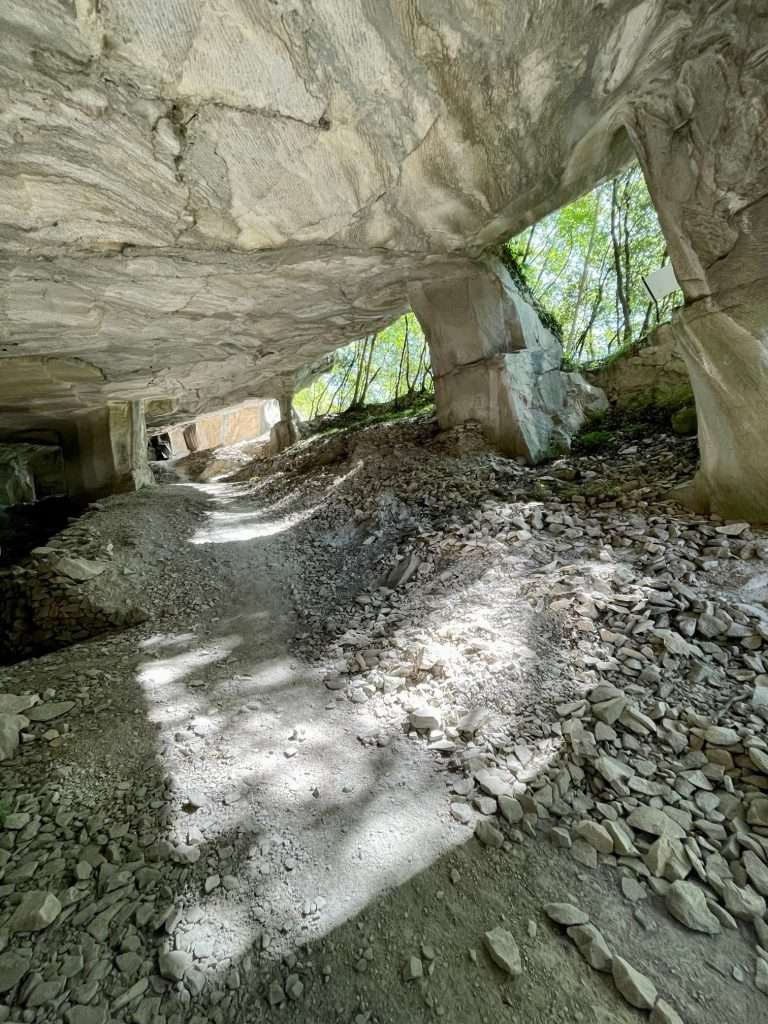
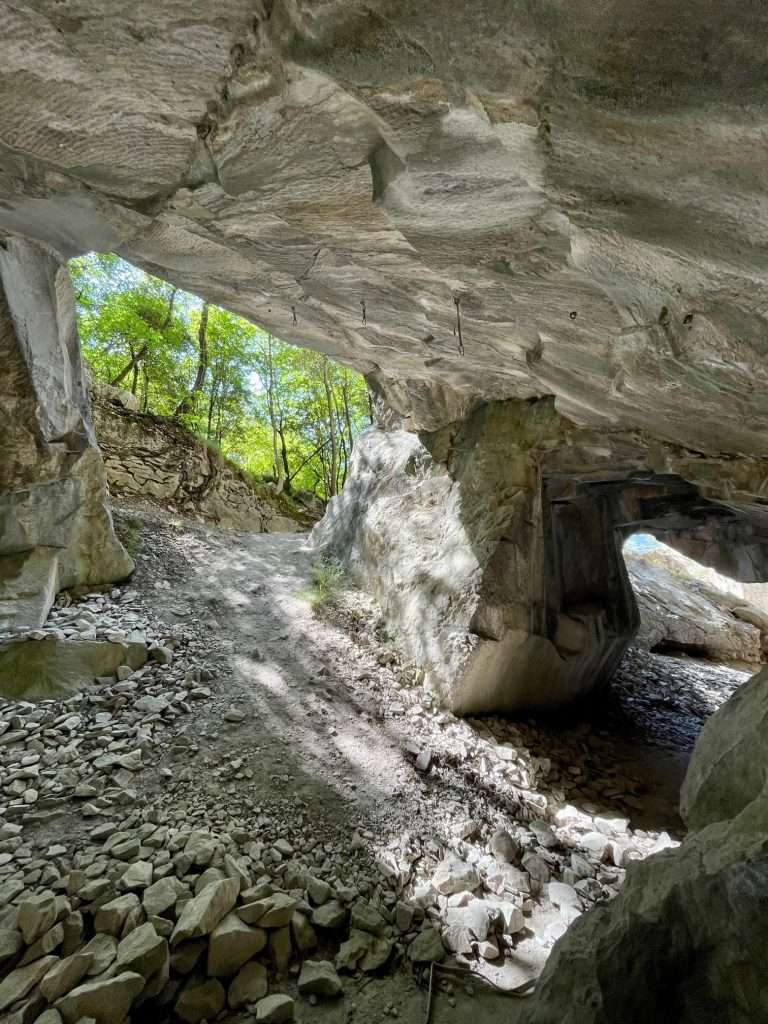
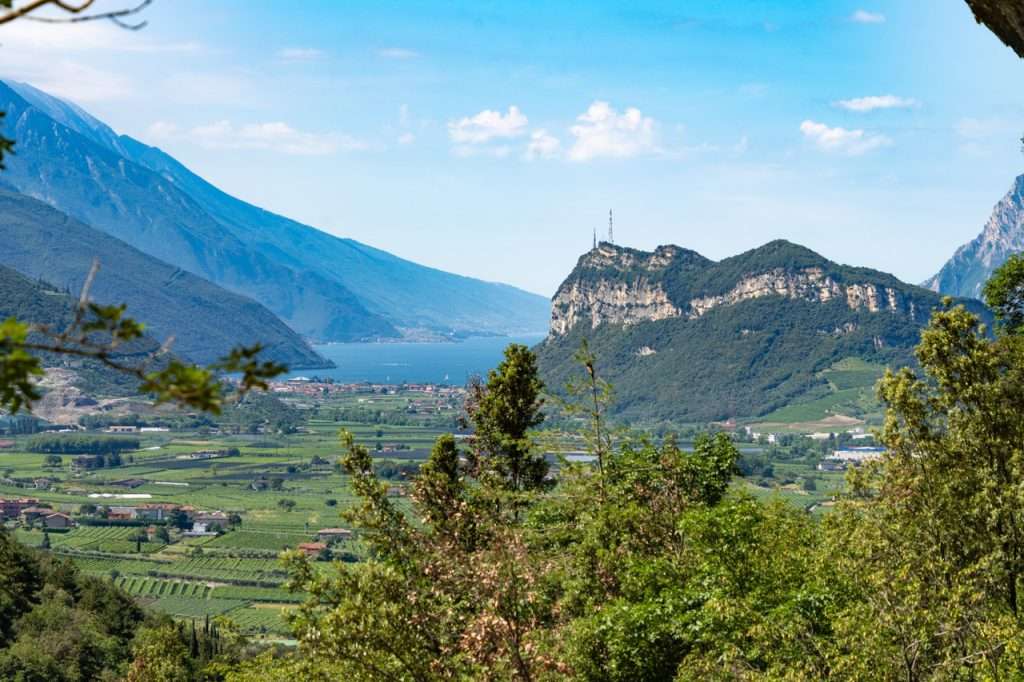
The last owner of the quarries, Mr. Giovanni Meneguzzi, deeply in love with the place, had two houses built near the high quarries and made the land around cultivable.
One of these houses has been renovated and used as a museum; it is open to the public from June to October every last Sunday of the month. The land around is still well-kept and cultivated with olive trees and fruit trees. A real gem!
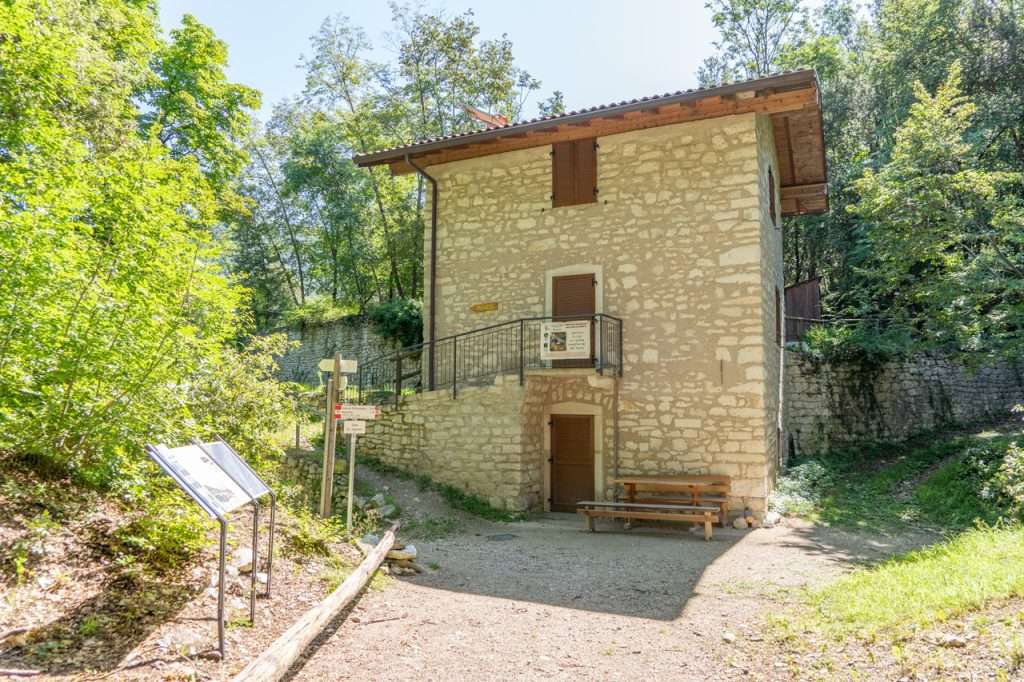
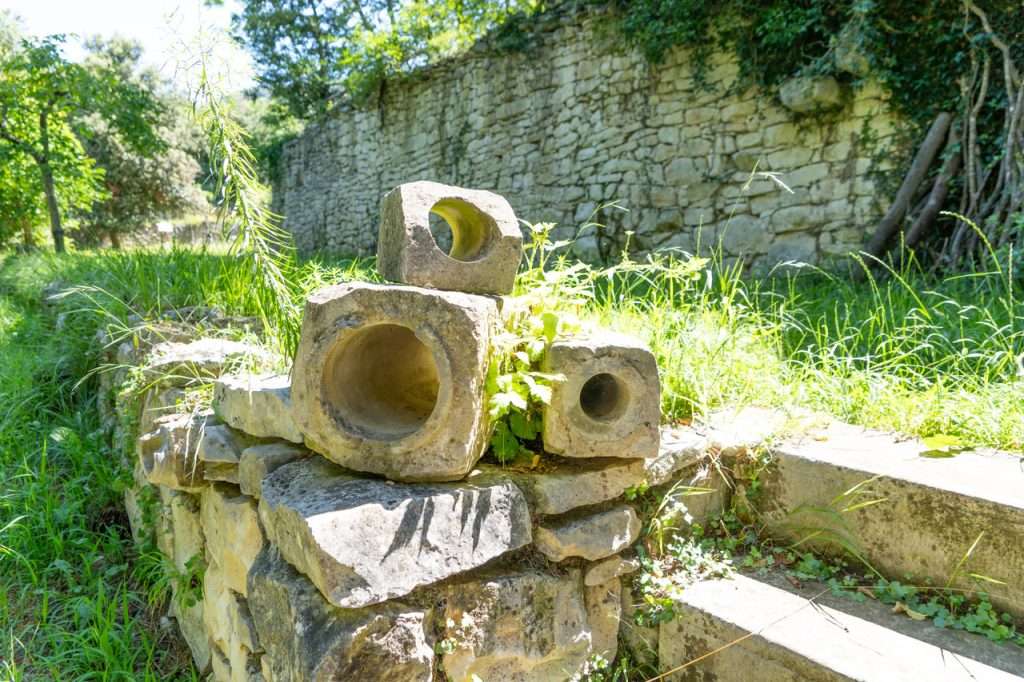
The northernmost holm oak forest in Europe
The most representative tree of Bosco Caproni is the holm oak (Quercus Ilex). It is an evergreen oak typical of the Mediterranean environment, which finds its northern limit of distribution right here in Upper Garda.
Other spontaneous trees that can be observed are the downy oak, the omiello and the hop hornbeam. There is also a conspicuous presence of black pine, not native, but widely used until 1950 for reforestation.
The “fratte”
Where the terrain was steep, the soil shallow and subject to runoff from the rains, dry stone walls were built to cultivate, to then fill the space upstream with soil, forming large terraces. Locally these walls are called “fratte”, from the Latin frango which means to break but also to stem.
Bosco Caproni still reports several testimonies, thanks to the cultivation work that Giovanni Meneguzzi did, as described above.
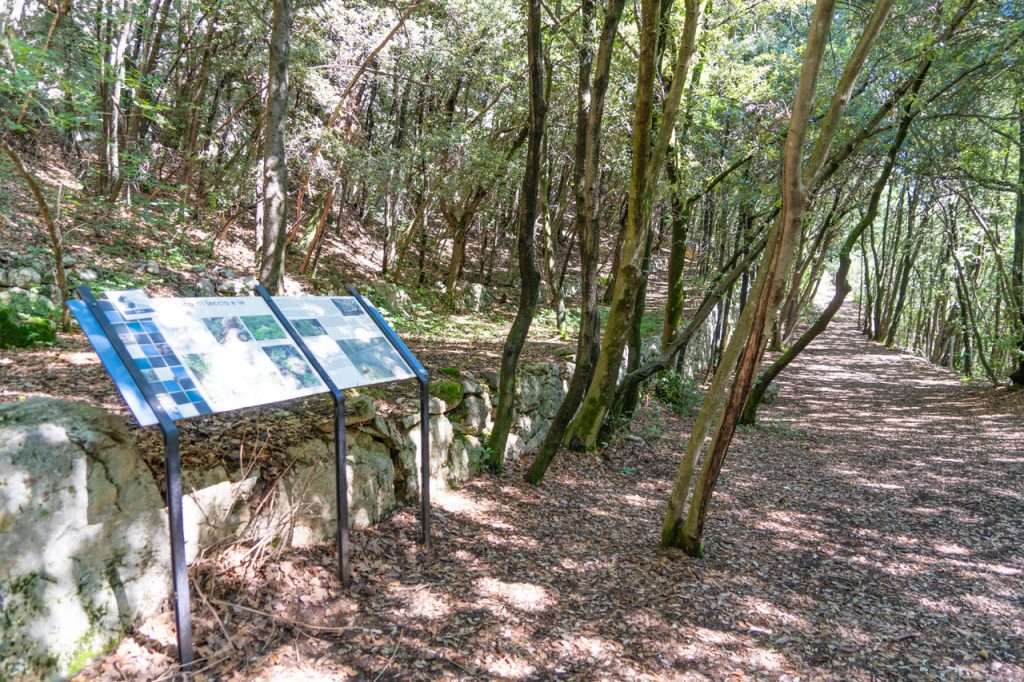
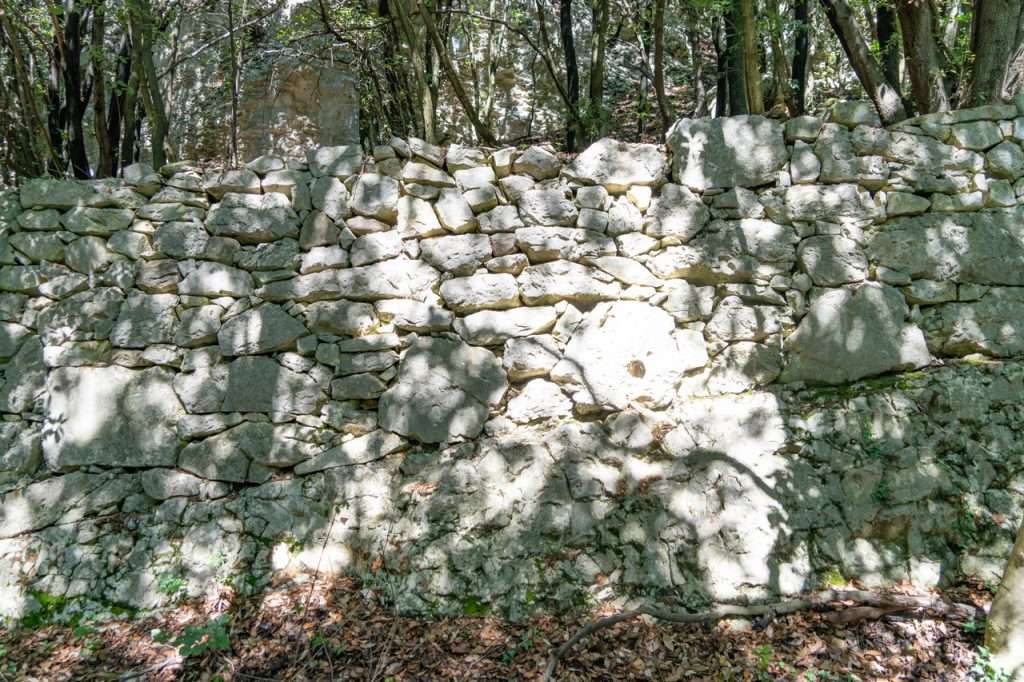
Walking among the trenches of Vastrè, from the First World War
Once you reach the “high quarries” and the House Museum, it is possible to make a small detour by taking the path called “Ring of the Trenches“. You walk among the trenches of the First World War with wonderful glimpses and panoramas of the Sarca Valley, Arco Castle, Monte Brione, Lake Garda and Paganella.
These trenches were part of the second defensive line of the then Austro-Hungarian Empire and served to control the road to Trento. The first trenches and fortifications, on the other hand, were located on the shores of Lake Garda, on Monte Brione and on the Ponale.
In a playful moment, there is always a deep thought for those who have been here in very different circumstances.
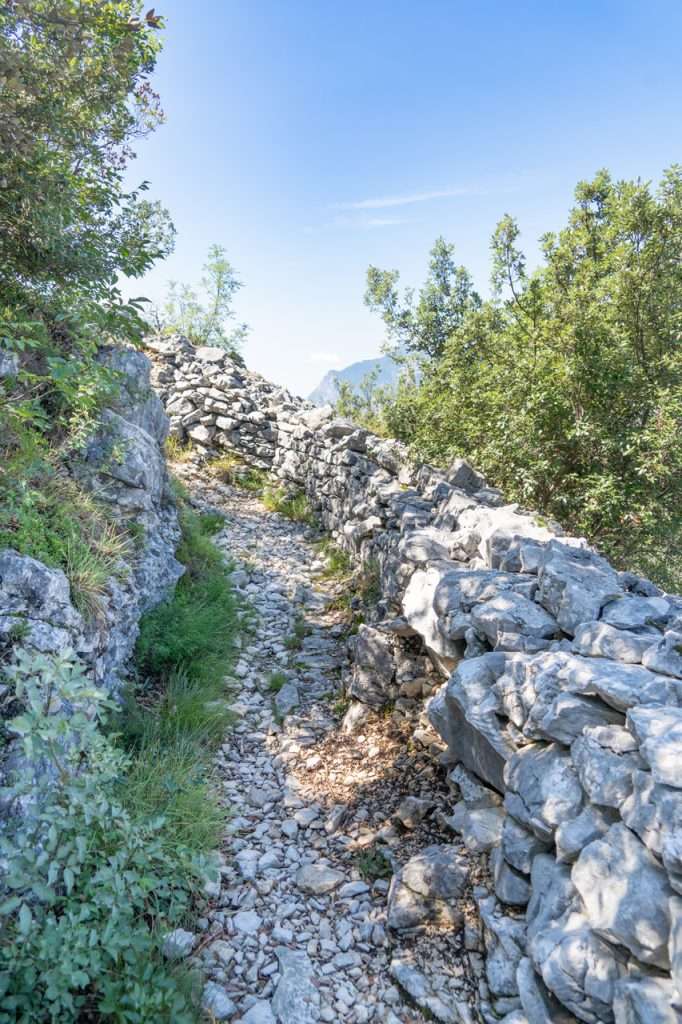
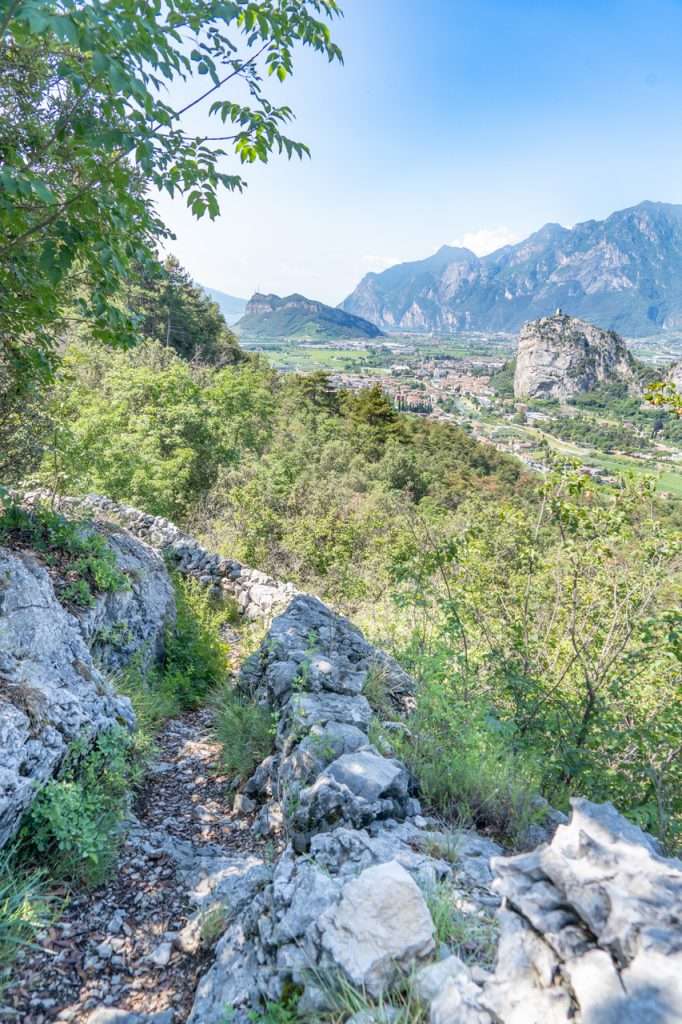
History of the landscape smoothed by glaciers
Walking along the trenches, you can observe the history of the surrounding landscape, profoundly characterized by the action of the glaciers and the Sarca river.
Between 2.5 million years and 10 thousand years ago the Alpine arc was affected by numerous phases of expansion and retreat of the glaciers. 20,000 years ago the Atesino glacier (the largest of the Alpine glaciers) flowed mainly through the Sarca Valley to the Po Valley. The moraines transported by this large glacier created the barrier that allowed the formation of Lake Garda.
Up until about 10,000 years ago the lake had a level 15 meters higher than it is today and just think that Monte Brione was even an island! The progressive erosion of the moraine barrier by the river Mincio, an emissary of the lake, has led to a lowering of the level and to the current geomorphological conformation of the area.
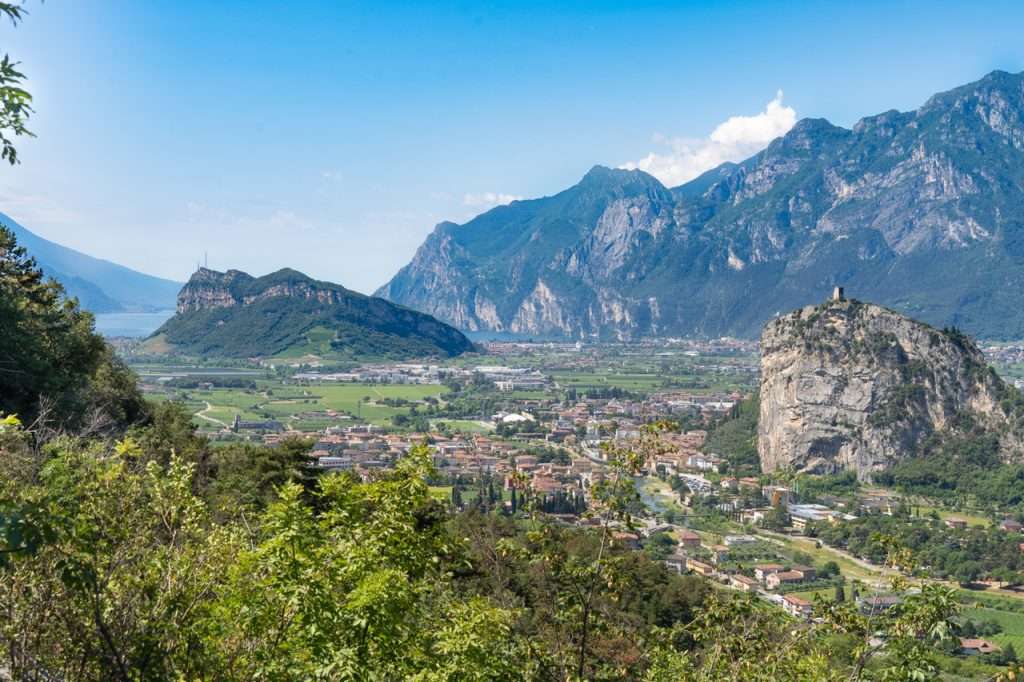
How to get to Bosco Caproni and where to park
If you have minibuses or large cars, you can easily park in Piazza Giuseppe Caproni in Arco (Trento). From there continue on foot taking Via Giacomo Leopardi, then Via Verde and finally Via Olivi in the direction of Bosco Caproni – Falesia Policromuro. You will arrive at the beginning of the path in about 15 minutes of walking.
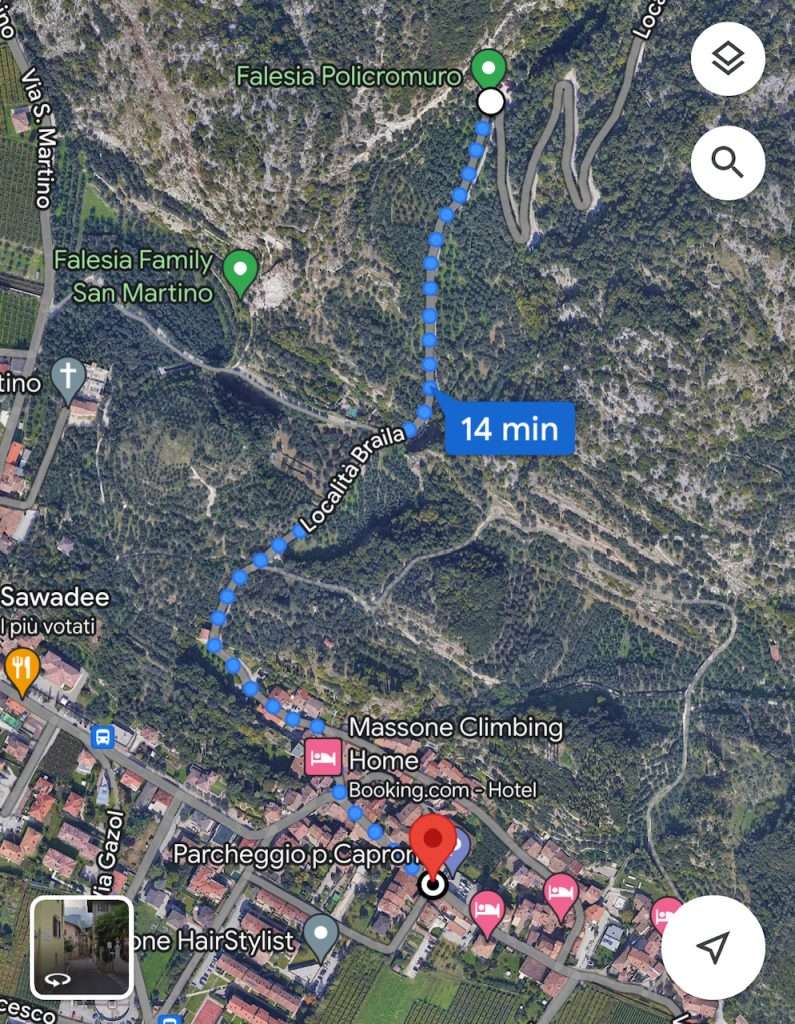
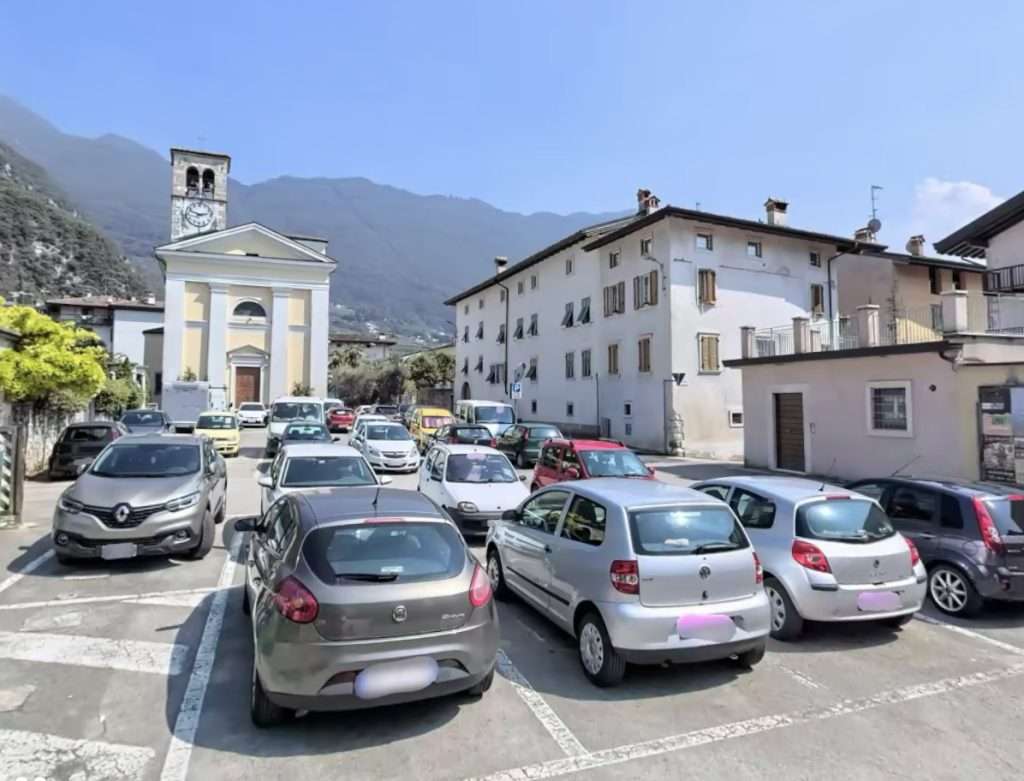
If, on the other hand, you have “leaner” cars, from Piazza Giuseppe Caproni you can continue by car to the parking lot of the Falesia Policromuro – Braila area, where the entrance to the path is located.
Warning: some passages between the alleys in the middle of the houses are quite narrow and the parking lot is small and you risk finding it already fully occupied.
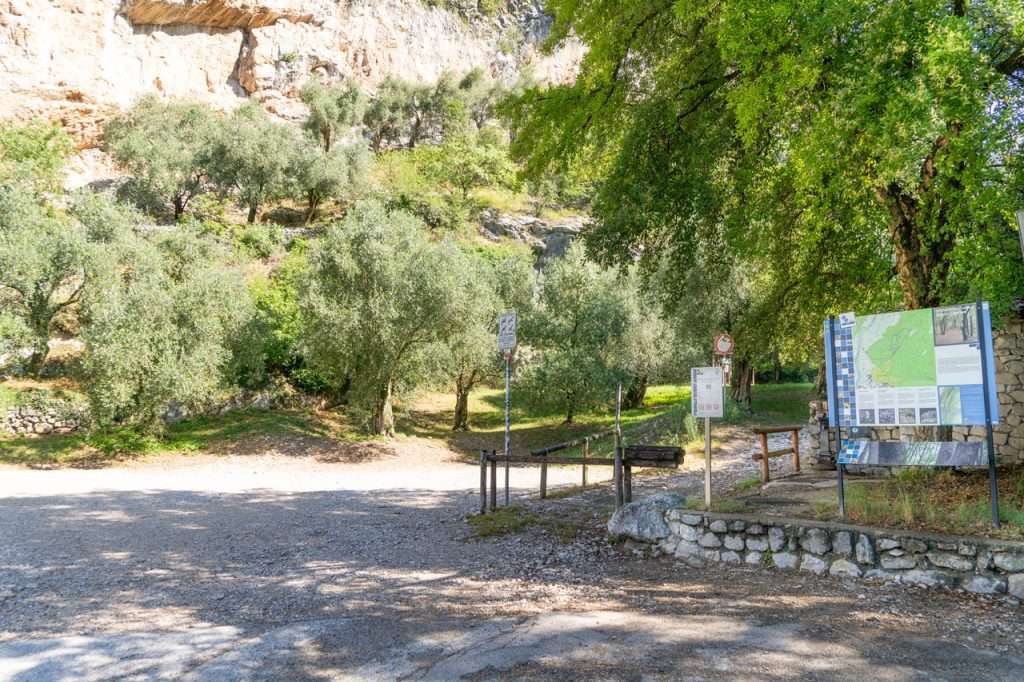
When to go to Bosco Caproni
The excursion is feasible all year round. However, we recommend that you always check the weather conditions (in the extraordinary case of snow or ice in winter).
Tip for photographers: the sun only enters the oolite quarries in the morning, creating beautiful plays of light and shadow. So legs on the shoulder after breakfast!
Dear Outdoors, all you have to do is get lost in the wonder of this forest, partially transformed by the hand of man who fortunately, at least this time, has been benevolent and protective.
Silvia Turazza – Garda Outdoors editorial staff
